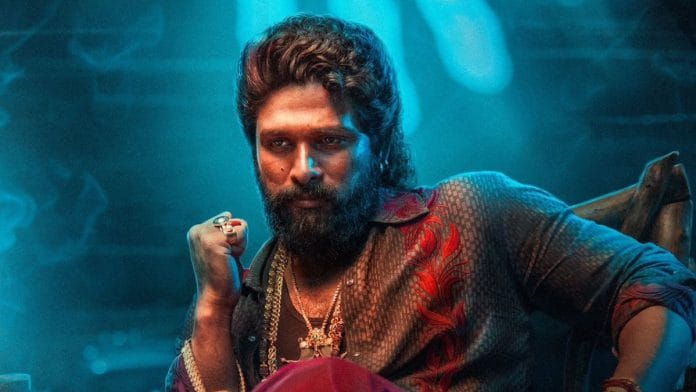Thank you dear subscribers, we are overwhelmed with your response.
Your Turn is a unique section from ThePrint featuring points of view from its subscribers. If you are a subscriber, have a point of view, please send it to us. If not, do subscribe here: https://theprint.in/subscribe/
The Pushpa film series presents a striking paradox in its treatment of gender dynamics through its “item songs” – a term that itself carries problematic connotations of objectification. Both “Oo Antava” from Pushpa (2021) and “Kissik” from Pushpa 2 attempt to critique male behavior while simultaneously catering to the male gaze.
Oo Antava: Criticizing While Conforming
In “Oo Antava,” Samantha Ruth Prabhu performs a dance number that ostensibly criticizes men’s objectifying gaze. The lyrics challenge male viewers about their voyeuristic tendencies, yet the visual presentation – featuring Samantha in revealing costumes performing suggestive dance moves – serves the very male gaze it criticizes. This creates a fundamental disconnect: while the song verbally condemns objectification, its visual elements actively participate in it.
Kissik: Mixed Messages
“Kissik” from Pushpa 2 follows a similar pattern. The lyrics condemn men who exploit women’s images for personal gratification, warning of consequences. However, the presentation of Sreeleela in revealing attire, performing seductive choreography, contradicts this message of female empowerment. The song simultaneously attempts to champion women’s rights while packaging its message in traditionally objectifying visual language.
The Broader Implication
This contradiction reflects a larger issue in commercial cinema where attempts at social commentary are compromised by commercial imperatives. The filmmakers attempt to appear progressive through lyrics while adhering to conventional market expectations through visuals. This results in a self-defeating message where the medium undermines the intended message.
The dissonance raises questions about whether such songs can effectively critique patriarchal attitudes while operating within and profiting from those same structures. It highlights the challenges of addressing social issues within the constraints of commercial entertainment, where the pressure to appeal to existing audience expectations often conflicts with meaningful social criticism.
The Author Amarendra Reddy Sagila is a Data Governance Specialist based in Virginia, USA. He holds an MBA in Finance from SUNY Buffalo. As the founder of FutureCompaz, he is dedicated to equipping youth with the skills they need to succeed in all facets of life.
These pieces are being published as they have been received – they have not been edited/fact-checked by ThePrint


